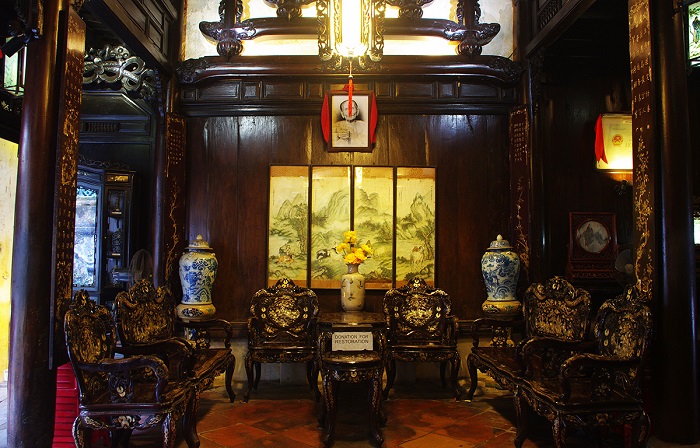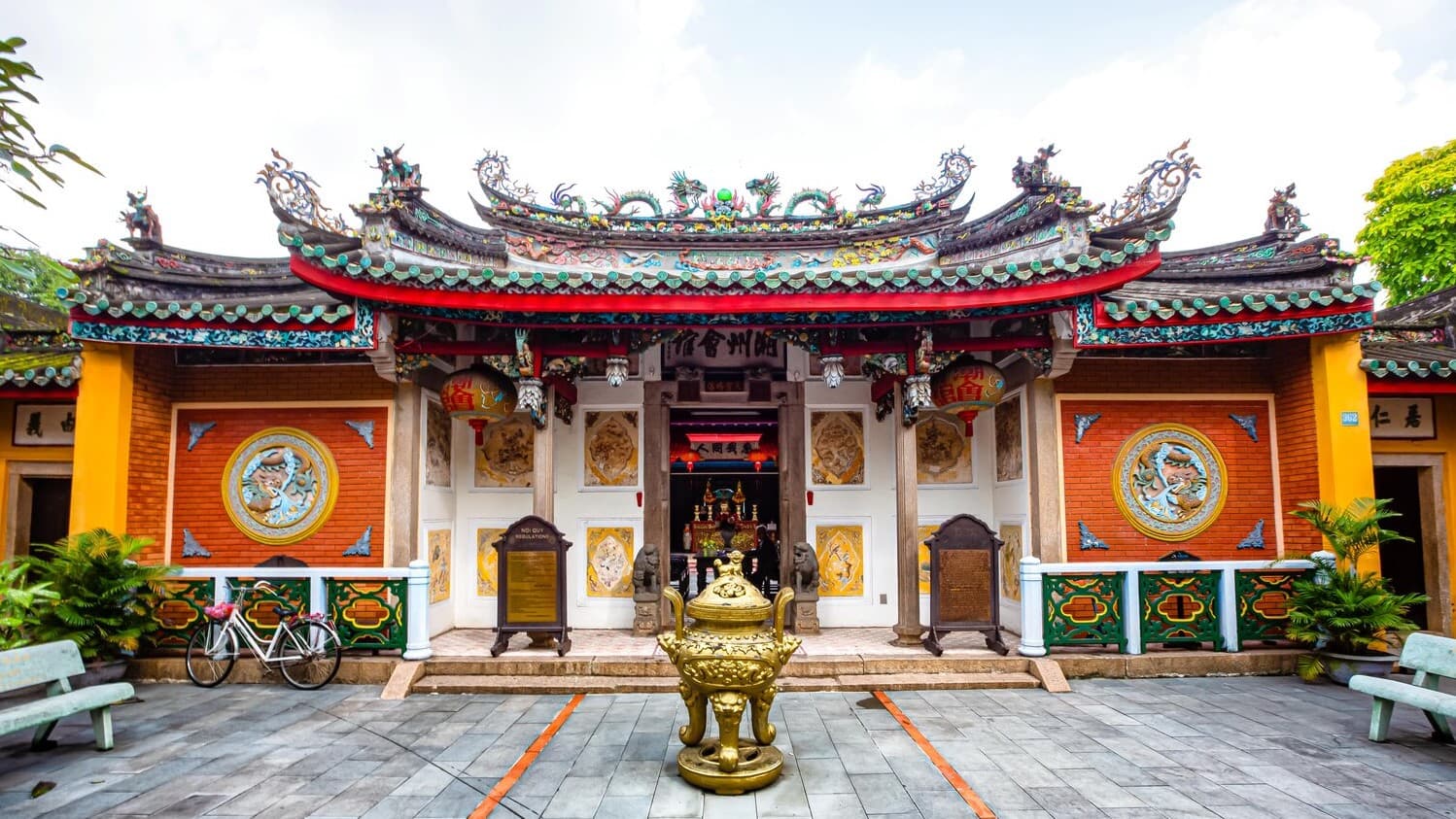Traveling to Hoi An Ancient Town: Detailed 2023 Travel Guide for Transportation, Dining, and Accommodation
Traveling to Hoi An Ancient Town offers you a chance to explore not only its rich cultural heritage through its ancient architecture, traditional folk activities, and picturesque natural landscapes but also the opportunity to savor its delectable local cuisine that is sure to satisfy every palate. Here is a comprehensive guide, from A to Z, for the best destinations, dining options, transportation, and travel tips to ensure a convenient and fulfilling trip.

Introduction to Hoi An Ancient Town
Traveling to Hoi An Ancient Town is an exciting and memorable experience for both local and international tourists. Located about 30km southwest of the city center of Da Nang, Hoi An is a tranquil and venerable destination. Its charm comes from its over 400-year-old urban area, ancient architecture, moss-covered tiled roofs, and vibrant lantern-lit streets.
Hoi An is also famous for its unique traditional festivals, such as the Village Feast Ceremony, the Commemoration of Ancestors in Different Crafts Ceremony, and the Commemoration of Religious Saints Ceremony. Additionally, there are traditional folk games like “ho khoan,” “ho gia gao,” and “bai choi.”
Beyond its serene beauty, traveling to Hoi An allows you to explore the cultural fusion of various Eastern cultures, including Japan, China, and Vietnamese culture. Hoi An was once a bustling trading port under the Nguyen dynasty about 200 years ago, and the trade interactions between Vietnam and other countries like Japan and China have shaped Hoi An into a multicultural and vibrant town that still thrives today.
The Ideal Time to Travel to Hoi An
The best time to travel to Hoi An is from February to April each year. During this period, the weather is pleasantly mild, with minimal rainfall and gentle sunshine, making it perfect for sightseeing and exploration.
From May to August, the weather is sunny, but May and June may have some hot days, so it’s advisable to endure a bit of heat. However, this is an excellent time for snorkeling and exploring the coral reefs at Cu Lao Cham. If you plan to visit Hoi An during other months, be sure to keep an eye on the weather forecast for the most convenient trip.
How to Get to Hoi An Ancient Town
When traveling to Hoi An, you can choose from various transportation options: flights, trains, buses, coaches, or private vehicles.
By Air: To reach Hoi An quickly, you can take a flight to Da Nang International Airport, as it is the closest airport to Hoi An (approximately 30km away). There are several airlines operating flights from Hanoi or Ho Chi Minh City to this airport, with a flight duration of about 85 minutes. To secure affordable tickets, it’s advisable to research and book them 3 to 6 months in advance.
By Train: You can opt for a train journey to Da Nang Railway Station. If you’re traveling from Hanoi or Ho Chi Minh City, the travel time typically ranges from 14 to 17 hours. Ticket prices vary from 400,000 to 1,800,000 VND depending on the type of train and seat class.
Transportation Options in Hoi An Ancient Town
To explore the tourist areas of Hoi An Ancient Town, you can choose from several transportation options:
Motorbike Rental: This is a popular choice for personal transportation. With a daily rental cost of 120,000 to 150,000 VND, you can tour Hoi An Ancient Town at your own pace, navigate through small alleys, stop for check-ins and sightseeing whenever you like.
Taxi: If you are familiar with the roads and prefer not to spend time finding your way, taking a taxi is the most convenient option for getting to Hoi An’s tourist attractions.
Cyclo (Rickshaw): Touring around the ancient town on a cyclo is a fascinating and memorable travel experience you should try. You can catch a cyclo on Tran Phu Street or Phan Chau Chinh Street, and the price is approximately 150,000 Vnd
Bicycle: Renting a bicycle is an ideal choice for leisurely exploring the tranquil beauty of Hoi An Ancient Town. Some hotels offer complimentary bicycles for guests, or you can rent one for as little as 40,000 VND per day.
Choosing the Right Accommodation in Hoi An
Ancient Town For the most convenient trip to Hoi An Ancient Town, it’s best to choose accommodation close to the town center. Additionally, consider the quality of service and amenities offered by the hotel or resort, as well as its location.
One of the most beloved and frequently chosen accommodations by travelers when visiting Hoi An Ancient Town is Vinpearl Resort & Spa Hoi An. Located just 8 km from Hoi An, this resort is designed in a modern style, featuring well-equipped rooms with romantic views of Cua Dai Beach and Cu Lao Cham Island. Vinpearl Resort & Spa Hoi An also offers a restaurant, bar, and outdoor swimming pool to enhance your stay.
Must-Visit Tourist Attractions in Hoi An Ancient Town
Consult the tourist map of Hoi An Ancient Town to ensure you don’t miss these famous and captivating destinations:
Unique and Ancient Houses Phung Hung Ancient House: This house belonged to one of the wealthiest merchants in old Hoi An and is known as the widest and tallest in the area. It’s entirely built from precious ironwood and displays traditional architectural features, reflecting a life of affluence.
Tan Ky Ancient House: This house is famous and a must-visit attraction in Hoi An. Over the centuries, it has survived significant floods and remains well-preserved. Tan Ky Ancient House is a fusion of Vietnamese, Chinese, and Japanese architectural styles in its intricate details. Every aspect of the house is meticulously and delicately crafted, making it a top tourist spot in Hoi An.

Duc An Ancient House: This house exudes an Eastern vibe in Hoi An. What makes Duc An Ancient House stand out is the use of “kieng kieng” wood, a rare wood found only in Quang Nam province. Beyond its serene beauty, the house also preserves numerous artifacts, documents, and exhibits that hark back to ancient times.
6.2. Famous Assembly Halls in Hoi An Ancient Town
Quang Dong Assembly Hall: Situated right in the heart of Hoi An Ancient Town, Quang Dong Assembly Hall is highly regarded. Originally a meeting place for business activities, it was built by a Chinese merchant, resulting in a unique blend of Chinese architectural style. The construction showcases an exquisite combination of wood and stone, with intricate carvings of dragons and lions.
Trieu Chau Assembly Hall, also known as Ong Bon Pagoda: The intricate architectural style, folklore-themed decorations, and especially the raised patterns made of porcelain create a unique charm for this hall.

Phuc Kien Assembly Hall: Known as the largest and most beautiful assembly hall in Hoi An’s tourist area, Phuc Kien Assembly Hall boasts a vast courtyard with a rock garden featuring a sculpture of carp leaping over the dragon gate. When visiting Phuc Kien Assembly Hall, don’t forget to explore the main hall dedicated to Thien Hau Thanh Mau, the Goddess of the Sea.
6.3. Hoi An Ancient Town Temples and Churches Japanese Covered Bridge:
This is perhaps the most iconic and recognizable symbol of Hoi An Ancient Town. The bridge was constructed by Japanese merchants in the early 17th century and was designed to connect the Japanese community with the Chinese community across the river. The bridge has a small temple inside, where people often come to pay their respects.
Chua Cau (Japanese Bridge Temple): While visiting the Japanese Covered Bridge, you can explore Chua Cau, a small temple inside the bridge. It is dedicated to the god of weather and health, Tran Vo Bac De, and the god of prosperity, Tran Vo Bac Dau.
Chuc Thanh Pagoda: Located in Kim Bong Village, Chuc Thanh Pagoda is one of the oldest pagodas in Hoi An and is associated with the development of Buddhism in the region. The pagoda exudes a tranquil atmosphere and is home to many precious artifacts.

Unique Hoi An Ancient Town Festivals
7.1. Hoi An Lantern Festival The Hoi An Lantern Festival is held on the 14th day of every lunar month when the town is lit up with thousands of colorful lanterns. This event is an enchanting spectacle that draws crowds of tourists and locals alike. Visitors can participate in the lantern-making process, create their lanterns, and release them on the Thu Bon River, making a wish for good luck and happiness.
7.2. Hoi An Mid-Autumn Festival The Hoi An Mid-Autumn Festival usually takes place in August or September, depending on the lunar calendar. This event is especially captivating for children as it features traditional Vietnamese games, lion dances, lantern processions, and, of course, mooncakes. Visitors can immerse themselves in the joyous atmosphere and try making mooncakes with locals.
7.3. Hoi An Full Moon Festival The Hoi An Full Moon Festival is celebrated on the 1st and 15th days of every lunar month. During this festival, Hoi An Ancient Town becomes even more enchanting with streets illuminated by colorful lanterns, live traditional music performances, and traditional games. It’s a perfect time to immerse yourself in the local culture and experience Hoi An at its most magical.
Unforgettable Food Experiences in Hoi An Ancient Town
Hoi An Ancient Town is renowned for its diverse and delectable cuisine, a harmonious blend of Vietnamese, Chinese, and Japanese flavors. Here are some must-try dishes and restaurants:
8.1.Cao Lau is a unique dish that is quintessentially Hoi An. It consists of thick, chewy noodles, sliced roast pork, and greens, all bathed in a flavorful broth. The secret to its distinctive taste lies in the water used to make the noodles, which is sourced from an ancient Cham well.
Where to try it: For an authentic Cao Lau experience, visit Ms. Phuong’s Cao Lau, located at 25 Thai Phien Street. Her Cao Lau is highly regarded by both locals and tourists.
8.3. White Rose Dumplings, or “Banh Bao Vac,” are a specialty of Hoi An. These delicate dumplings are made from translucent rice flour dough filled with shrimp or pork and served with a delicious dipping sauce.
Where to try it: Visit the famous White Rose Restaurant, located at 533 Hai Ba Trung Street, to savor these exquisite dumplings.
8.4. Mi Quang is a noodle dish that combines rice noodles, fresh herbs, peanuts, and your choice of protein (often shrimp, chicken, or pork). The broth is typically rich and flavorful, making it a delightful and filling meal.

Where to try it: You can find delicious Mi Quang at Mi Quang Ba Mua, located at 43 Tran Cao Van Street.
8.5. Hoi An Pancakes (Banh Xeo) Banh Xeo are crispy Vietnamese pancakes filled with shrimp, pork, bean sprouts, and herbs. They are usually served with a side of fresh greens and a flavorful dipping sauce. Eating Banh Xeo is an interactive experience as you wrap the pancakes in lettuce leaves and dip them in the sauce.
Where to try it: Head to Ms. Ly’s Banh Xeo, located at 27 Le Loi Street, for a delightful Banh Xeo feast.
8.6. Com Ga (Chicken Rice) Com Ga is a simple yet delicious dish that consists of tender chicken served over fragrant, seasoned rice. It’s often garnished with herbs, fried shallots, and a side of chicken broth or chili sauce.
Where to try it: Com Ga Ba Buoi, at 22 Phan Chu Trinh Street, is a popular spot for this dish and offers an authentic taste of Hoi An’s Com Ga.
Safety Tips for Traveling to Hoi An Ancient Town
While Hoi An is generally a safe destination for travelers, it’s always wise to take precautions to ensure a safe and enjoyable trip:
9.1. Protect Against Sunburn: The tropical climate in Hoi An can be hot and sunny. To avoid sunburn, wear sunscreen, a hat, and sunglasses when you’re outdoors.
9.2. Stay Hydrated: Drink plenty of water to stay hydrated, especially if you’re exploring the town on foot or by bicycle.
9.3. Use Caution with Street Food: While street food in Hoi An is delicious, exercise caution when choosing street vendors. Look for vendors with a high turnover of customers, as this can be a sign of freshness and quality.
9.4. Beware of Traffic: Traffic in Vietnam can be chaotic, so exercise caution when crossing the streets. Follow the locals’ lead and walk slowly and steadily. Many drivers will adjust their path to avoid pedestrians.
9.5. Respect Local Customs: Hoi An Ancient Town is steeped in tradition and culture. Be respectful when visiting temples, pagodas, and other sacred sites by dressing modestly and following local customs.
9.6. Secure Your Belongings: Keep your belongings secure when exploring crowded areas to prevent theft. Use a money belt or neck pouch for your valuables.
Conclusion Hoi An Ancient Town is a remarkable destination that offers a unique blend of culture, history, and gastronomy. Exploring the ancient streets, visiting traditional houses, and savoring local delicacies will make your trip an unforgettable experience. Plan ahead, be prepared for the weather, and immerse yourself in the rich culture of Hoi An for a truly memorable adventure!

